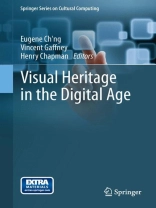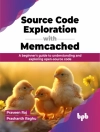Heritage is everywhere, and an understanding of our past is increasingly critical to the understanding of our contemporary cultural context and place in global society. Visual Heritage in the Digital Age presents the state-of-the-art in the application of digital technologies to heritage studies, with the chapters collectively demonstrating the ways in which current developments are liberating the study, conservation and management of the past. Digital approaches to heritage have developed significantly over recent decades in terms of both the quantity and range of applications. However, rather than merely improving and enriching the ways in which we understand and engage with the past, this technology is enabling us to do this in entirely new ways.
The chapters contained within this volume present a broad range of technologies for capturing data (such as high-definition laser scanning survey and geophysical survey), modelling (including GIS, data fusion, agent-based modelling), and engaging with heritage through novel digital interfaces (mobile technologies and the use of multi-touch interfaces in public spaces). The case studies presented include sites, landscapes and buildings from across Europe, North and Central America, and collections relating to the ancient civilisations of the Middle East and North Africa. The chronological span is immense, extending from the end of the last ice age through to the twentieth century.
These case studies reveal new ways of approaching heritage using digital tools, whether from the perspective of interrogating historical textual data, or through the applications of complexity theory and the modelling of agents and behaviours. Beyond the data itself, Visual Heritage in the Digital Age also presents fresh ways of thinking about digital heritage. It explores more theoretical perspectives concerning the role of digital data and the challenges that are presented in terms of its management and preservation.
قائمة المحتويات
Foreword by Ross Perry.- Seeing Things: Heritage Computing and the Arts and Humanities.- Digital Heritage: What Happens when we Digitize Everything?.- Digital Reconstruction of Archaeological Sites and Monuments: Some Experiences in South-Eastern Sicily.- Urban Scrawl: Reconstructing Urban Landscapes Using Documentary Sources.- Crossing Borders: A Multi-Layer GIS Mapping Framework for the Cultural Management of the Mundo Maya Region.- Situating Cultural Technologies Outdoors: Designing for Mobile Interpretation of Rock Art in Rural Britain.- Simulation and Visualisation of Agent Survival and Settlement Behaviours in the Hunter-Gatherer Colonisation of Mesolithic Landscapes.- Visualising Large Scale Behaviours: Presenting 4D Data in Archaeology.- Time and Tide: Modelling the Effects of Landscape Change on Population Support in the Southern North Sea.- Time and Tide: Modelling the Effects of Landscape Change on Population Support in the Southern North Sea.- Reconstructing a Painful Past: A Non-invasive Approach to Reconstructing Lager Norderney in Alderney, the Channel Islands.- A Theoretical Framework for Stigmergetic Reconstruction of Ancient Text.- Multi-Touch Tables for Exploring Heritage Content in Public Spaces.- More Than Just a Sum of the Points: Re-thinking the Value of Laser Scanning Data.- Resolving the Carving: The Application of Laser-scanning in Reconstructing a Viking Cross from Neston, Cheshire.- “There’s An App For That”: Building Smartphone Applications to Improve the Ergonomics of Landscape Study, Analysis and Interpretation.- Preserving our Digital Heritage: Information Systems for Data Management and Preservation.- Digital Heritage: Concluding Thoughts.












